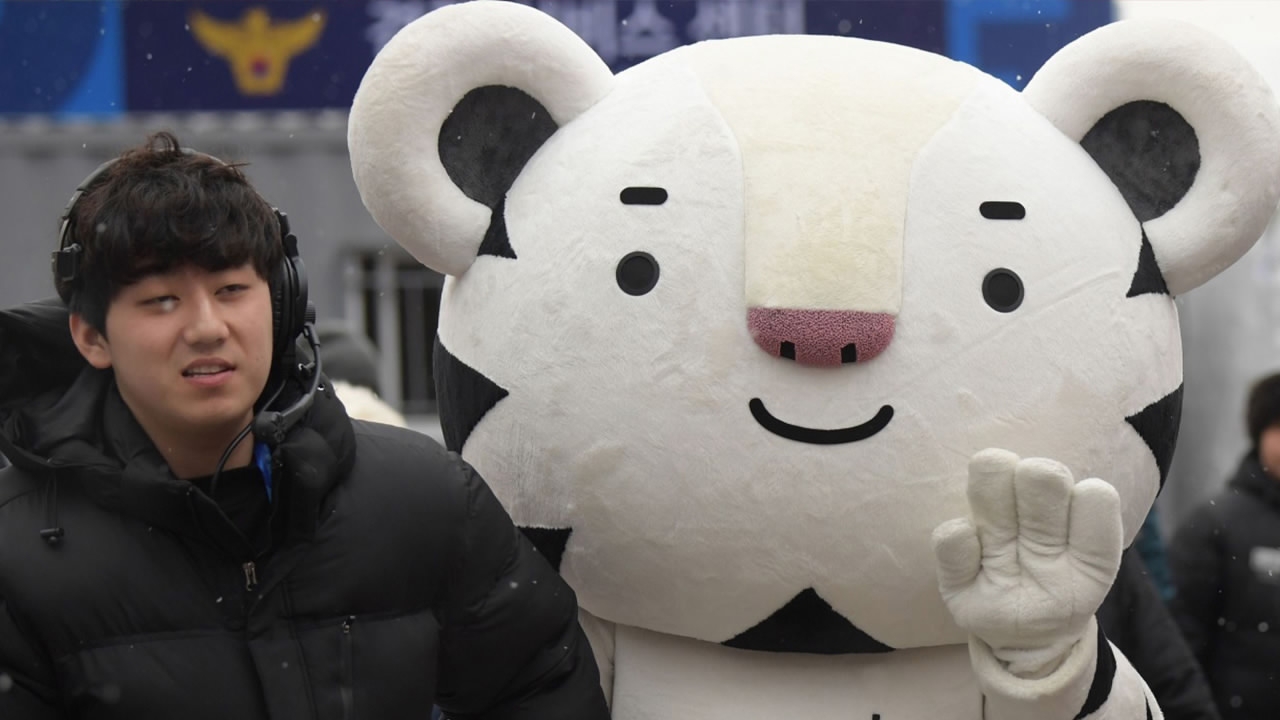
Sports
20:04, 14-Feb-2018
Olympics mascot Soohorang brings smiles on Valentine’s Day
By Hu Shichen

Since the 1972 Munich Games, mascots have been a regular fixture or “tradition” at the Olympics with each host country selecting something that reflects its culture. And for the PyeongChang Winter Olympics, a white tiger, named Soohorang, was chosen.
And on Valentine’s Day, Soohorang seems even busier than usual in bringing smiles to picture-taking fans willing to embrace a 'tiger' and winning plenty of admirers.
While the feline is normally viewed as a fearsome beast, the white tiger in S. Korea has carved itself in Korean folk tales as a symbol of trust, strength, and protection.

Mascots Soohorang and Bandabi covered with snow. /Xinhua Photo
Mascots Soohorang and Bandabi covered with snow. /Xinhua Photo
The mascot’s name Soohorang is also significant as Sooho is the Korean word for protection while Rang means tiger and appears in “Jeongseon Ariang,” the traditional folk music of Gangwon Province where PyeongChang is located, and its color connects to the snow and ice of winter sports.
Being a symbol of the Olympics is no easy task as Soohorang is in constant demand, just like one of these Games technological symbols, the robot cleaner, but at least they’ve got each other for support and the occasional pat on the back for a job well done.

SITEMAP
Copyright © 2018 CGTN. Beijing ICP prepared NO.16065310-3
Copyright © 2018 CGTN. Beijing ICP prepared NO.16065310-3